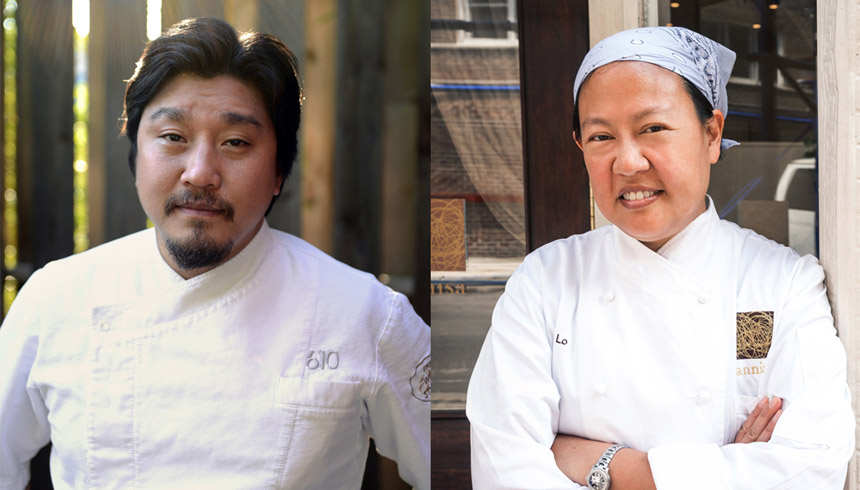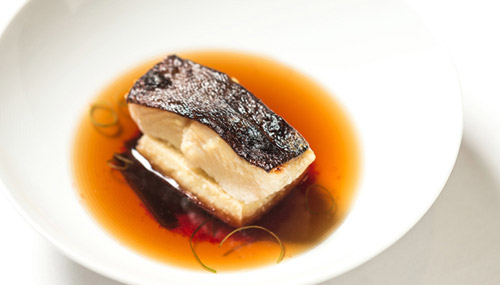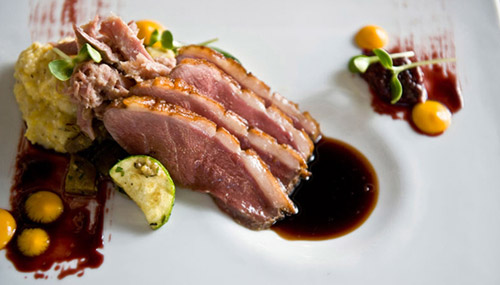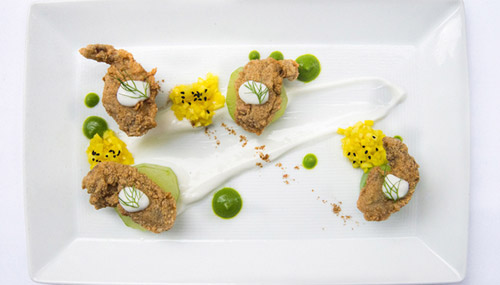East West Lifestyle
Celebrity Chefs Expanding Our Relationship to Food and Culture

47 million adults define themselves as “foodies,” and more Americans now view food as an art form.
Thanks in part to a growing food culture developing around celebrity chefs, 64% of consumers reported that they are more adventurous in their restaurant food choices than just two years earlier, according to the National Restaurant Association.
At the forefront of this culinary renaissance are chefs like Anita Lo of Annisa in New York; whose innovative combination of ingredients and culinary traditions has earned her an invitation to prepare the State Dinner for Chinese President, Xi Jinping’s visit to the White House. There is also four-time James Beard Award nominated Edward Lee of 610 Magnolia in Louisville, Kentucky who, as a Korean-American from New York has become a prominent influence in New Southern cuisine. Lo and Lee will be among the celebrity chefs preparing dishes for the premiere of the “East West Masters Dinner” at this year’s All-Star Chef Classic at L.A. Live.
“I think we’re all just amalgams of our past and it shows in our food,” Lo told us in a recent interview. Lo laughingly describes herself as a cultural mutt. As a Chinese-American growing up in Michigan, Lo attributes an early openness to different foods to having caretakers from various backgrounds. “There are no true borders in food,” Lo writes in her latest book Cooking Without Borders.

"I think you can build upon any cultural standpoint that you come from."
Even after graduating with honors from the Ecole Ritz-Escoffier in Paris where she interned under acclaimed chefs Guy Savoy and Michel Rostang, Lo maintains a humble approach to exploring food. “I didn’t work in the industry that long before becoming a chef. I’ve never been a sous chef – I worked in two kitchens as a line cook before I become chef; and that really gave me more freedom, because I didn’t have it ground into me that there were only certain ways of doing things,” says Lo.
She reacted skeptically to the suggestion that the rigor of French culinary technique somehow offered a more versatile approach to create new food combinations saying, “I think you can build upon any cultural standpoint that you come from. You’re using your references and experiences.” In terms of how people can get wider exposure to new cuisines, “I think television is certainly helping. I don’t think we’ve gotten anywhere near where we need to be. It’s about accessibility, but you have to stop dumbing things down.”
For Lo, increasing availability and exposure to new foods can help diversify our food supply and bring people together. “I think it’s a beautiful thing. I don’t think it’s the answer to everything, but you can’t discount the power of food.”
Finding a distinct voice
Lee grew up in New York where his first exposure to food was the home-style Korean cooking of his grandmother. In his book “Smoke and Pickles: Recipes and Stories from a New Southern Kitchen,” he recalls being introduced to the exotic foods of his Jewish and Puerto Rican friends. “All food culture is about identity. Especially in America where so many different cuisines collide with one another. It is really our most significant dialogue right now in food,” says Lee.
He says his grandmother’s refusal to make American food was, “in her own grandmotherly way, guiding me to forge a cultural identity of my own.”
Fifteen years ago, Lee first visited Magnolia 610 in Louisville to work with chef and owner Eddie Garber, and the following year he moved out from New York to immerse himself in new Southern cuisine. Today Lee is chef and owner at Magnolia 610 and was nominated for the James Beard Award, Southeast for four consecutive years. Surprisingly this Korean-American New Yorker feels his long dedication to Southern cooking isn’t a far departure from the food of his childhood.
"All food culture is about identity. Especially in America where so many different cuisines collide with one another.

“I don’t see too much difference between the two: humble ingredients, straightforward techniques, bold use of spices, a love for vinegar. The vocabulary may be different but the flavors are the same to me. I can weave through the cultures seamlessly.”
For Lee, exploring new terrain in Southern tradition is a combination of personal boldness and intuition, a quality that he absorbed from his grandmother. “What’s happening in Southern cuisine is less about technique than about attitude,” Lee writes. The art of cultivating a feel for food is something known in traditional Korean cooking as son mat “taste by hand,” authors Deuki Hong and Matt Rodbard describe in their new book “Koreatown.”
Creating new flavors
After returning to New York from studying in France, the lure of different cultures in the city continued to expand Lo’s culinary lexicon. Although she loves to travel, “there’s every culture here, so if you don’t have the means to go abroad yourself, there’s all sorts of cultural experiences that you can have right here in our city.”
Lo describes food as an approachable gateway to discover new cultures, and casts a wide net for inspiration; ranging from shared experiences of trying foods in new settings, to exploring markets in ethnic neighborhoods, to trying new ingredients that her staff brings into Annisa. “It’s about understanding culture, where the dishes are coming from, and how all the ingredients go together. It’s about balancing the flavors, making sure it makes sense on the palate,” says Lo.
So how does she balance the vast medley of flavors and ingredients that she uses? “It needs to have clean flavors. If you’re adding something to a recipe and especially if you say you have it in the title of the recipe, it has to be there easily discerned. Everything that you add has to have a reason to have it. It needs to play an important role.”

"There’s all sorts of cultural experiences that you can have right here in our city."
For his emphasis on an attitude-fueled approach to cooking, like all good chefs, Lee has a technical side. “I collect many vintage cookbooks. Everything is there like a blueprint for culinary history. The better we understand a historical approach to food, the more we can thoughtfully modernize our techniques.” Even Lee’s relationship with the harder to quantify smoky flavors in Southern cuisine is a combination of gut-feel and intellectual mastery. Describing smoke as the sixth-flavor, he says, “chemically it is distinct and predictable. From a flavor standpoint, it can enhance almost any dish depending on how balanced it is. I don’t think of BBQ when I think of smoke. I think of a taste that can harmonize with other flavors to create new textures and tastes.”
Taste for yourself
The premiere of the “East West Masters Dinner” at the All-Star Chef Classic, presented by East West Bank will take place at L.A. Live in Downtown Los Angeles on March 12, 2016. In addition to Anita Lo and Edward Lee, the evening will feature a wide variety of exquisite Asian cuisines including food by Charles Phan of The Slanted Door in San Francisco; Sang Yoon of Lukshon; and Niki Nakayama of n/naka in Los Angeles.
Sign up for the Reach Further Newsletter
We’ll keep you in the know about the latest US-Asia business news and trends.
Suscríbase al boletín Reach Further
Lo mantendremos informado sobre las últimas noticias y tendencias comerciales entre Estados Unidos y China.

